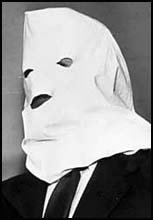How do you look through a looking glass? We see through the mirror (transparently) when we see self as an other to others and see others as ourselves. A perfected vision, though, would see neither others nor self, but only members of the one body in the mutual part/whole relationship. Such a perfected vision would know the universe as a mirror in which the whole cosmos appears to itself precisely as it is, ‘face to face’ as St. Paul has it (1 Corinthians 12 and 13).
This book is another story. The language of this hypertext has been shaped by the author’s history. Remember the Glory, the humpty dumpty English aircraft carrier of Chapter 2? (Follow that link if you don’t; it will open another windowtab.) The ‘knock-down argument’ of WWII was followed by the standing argument of the Cold War. Some accounts place the beginning of this new kind of conflict on or about that same day in 1945, when a Russian cipher clerk in Ottawa was hiding in a compassionate neighbour’s apartment as his own was being searched by Soviet agents. 
The day before, Igor Gouzenko had decided to reveal to Canadian authorities the existence of a global spying operation in which he was involved. Incredible as it seems in hindsight, the first authorities he went to didn’t believe him, so he didn’t get the immediate protection due to a whistle-blower (as we now call a revealer of corporate or government secrets). Or perhaps they didn’t understand him due to language barriers; but in any case, his revelations marked the beginning of an era when international relations were dominated by mutual suspicion. American culture was pervaded with paranoia, which was duly spread around the world with the growth of American Empire. (Note added 30 April 2017: it remains a powerful force in politics to this day.)
Growing up in this milieu certainly had an effect on the author’s sensibilities, and thus on the idiom of Turning Signs. But so did the other texts with which he crossed paths from that time to this, and threads from some of them are woven into this one.
When signs cross and stay crossed, we can call it weaving. The texture of an argument is determined by this weaving, but also by the accidents of timing in the history of the author’s reading. Every deep reading creates a context for the next reading, and the next writing.